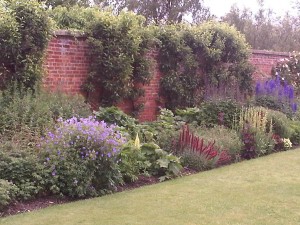
 What?
What?Himalayan balsam, also known as Impatiens glandulifera, is a purple flowering, non-native plant that infests riverbanks, waste land and gardens. It can grow to 2-3m and flowers between June and October.
The attractive weeds are also known as Policeman’s Helmets due to their hooded shape, and were introduced in the 1800s along with giant hogweed, firstly as an exotic plant. It quickly grew out of hand, and in recent years has spread all over England, and suffocated our natural wildlife.
Although pretty, it smothers other plants and can kill off native plants that we want to keep as it grows quickly and attracts pollenating insects that would otherwise be drawn to more desirable plants. Each weed produces hundreds of seeds and these can be shot up to 7 metres away by their seedpods, meaning it spreads quickly and over some distance.
In the wild or in rural areas, allowing this weed to grow near watercourses can cause permanent damage by erosion to the banks. Just like giant hogweed, it’s an offence to plant or cause its growth in the wild, and some councils and organisations take action to remove it from public areas due to the destruction it causes banks of water sources, and the way it limits native plants that we want to promote the growth of in the UK.
The adult plants need to be removed before they can seed, and totally eliminating the Himalayan balsam can be a long process. Contaminated soil should not be used for other plants, as any remainder of the Himalayan balsam will result in regrowth that will potential kill the plant you’re choosing to grow. For homeowners, it produces a high amount of pollen, so is a pain for hay fever sufferers.
 How and Who?
How and Who?It is kinder to the environment to avoid using chemicals when trying to remove weeds such as Himalayan balsam, as well as necessary to avoid infecting water sources if the weed is growing on river banks etc.
Himalayan balsam removal is not necessarily difficult – pulling the weed out is the best option if it’s only covering a relatively small area. But the difficulty comes in ensuring it won’t return, as seeds can wait two years before growing. If the plant is not fully removed, it may grow back within the same season, and if you try to cut it down once the seed heads have formed, it will efficiently spread the plant further.
Although some gardeners choose to tackle it themselves, we wouldn’t recommend this and instead suggest you use a professional, such as Complete Tree Care. At Complete Tree Care we have been providing a reliable and knowledgeable service for 15 years throughout London. No job is too large or small, we’re local authority approved and we can help you today. Call 020 8616 9051 or fill out our contact form on the right for advice and bookings.
« Back to News